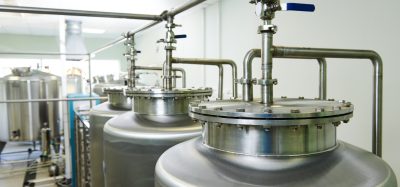Technology advancement to drive lab automation market through next decade
Posted: 11 July 2025 | Catherine Eckford (European Pharmaceutical Review) | No comments yet
While high costs are hindering growth in the lab automation market, research highlights that new innovations like AI offer potential to expand this rapidly evolving industry.


A report by Fact.MR has predicted that worldwide, the lab automation market will value $4,936 million by 2035.
Between 2025 and 2035, the industry is expected to grow at a CAGR of 7.3 percent, “driven by rising technological advancements that have transformed laboratory functions”.
Major factors driving growth of the global lab automation market
According to the report, a key driver of the market is the “ever-changing pace of technology, which includes advanced robotics, specifically designed for sample and reagent handling, and incorporates artificial intelligence (AI) and machine learning (ML) to perform more complex data analysis and predictions”.
“Another significant trend and the factor that encourages differentiation of solutions to the demands of a lab is installation of modular scalable automation systems”.
Demand for automated lab solutions is also increasing due to a desire to improve efficiency and reduce costs by streamlining operations, the report shared.
Leading players in the cell and gene therapy sector are investing in “intelligent labs and IT infrastructure to enhance throughput and innovation. The demand is also supported by the necessity in pandemic response and expansion of personalised medicine”.
Regional lab automation trends
In Europe, “the trend of shifting towards lab automation technology in the region will be promoted by the need to keep up with changing healthcare regulations,” the researchers anticipated.
Japan’s use of advanced robotics and AI integration
One region harnessing automation is Japan. Here, its economic growth, “especially in the field of lab automation, is closely associated with its innovativeness concerning ultra-efficient robots and AI”, the authors highlighted.
Furthermore, use of small-scale equipment, “such as laboratory arms and liquid handlers, is becoming increasingly popular in Japan, offering space-saving solutions for small laboratories”. This is a key advantage, considering the specialised labour required “has proven increasingly scarce in this era”.
Key obstacles limiting growth of the lab automation market
However, the high level of investment required is one of the greatest challenges for growth of the lab automation market, according to the researchers.
compatibility issues and the lack of standards may hinder the integration of new automation systems with existing software systems”
A lack of knowledge around eg, application of the technology or machines is also another limitation. For instance, operators having limited training to operate machines effectively “can lead to system failure due to misuse”.
Additionally, “compatibility issues and the lack of standards may hinder the integration of new automation systems with existing software systems”, the authors wrote.
They shared that key players in the lab automation industry include Agilent Technologies, Thermo Fisher Scientific and PerkinElmer.
Related topics
Artificial Intelligence, Data Analysis, Drug Development, Drug Markets, Industry Insight, investment, Lab Automation, Lab Equipment, Personalised medicine, Research & Development (R&D), Robotics, Technology, Therapeutics
Related organisations
Agilent Technologies Inc, Fact.MR, PerkinElmer Inc., Thermo Fisher Scientific









